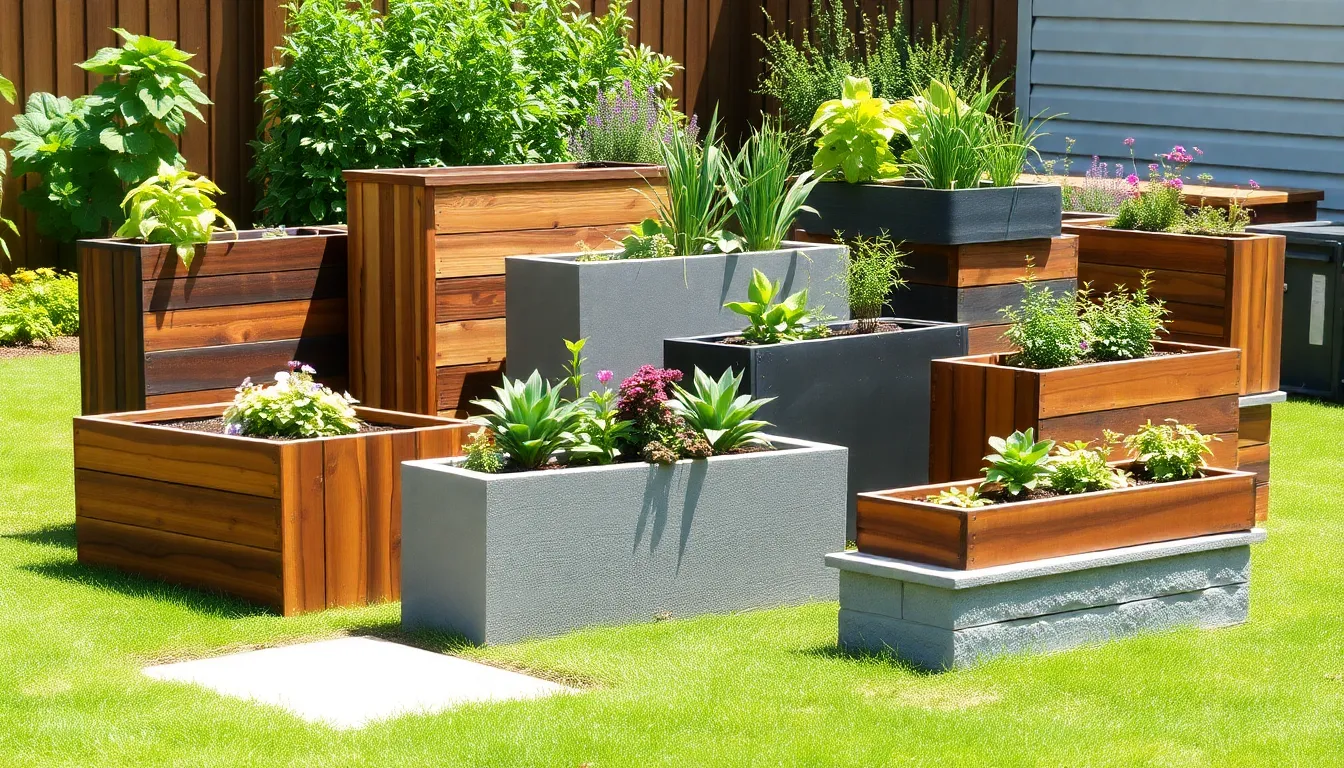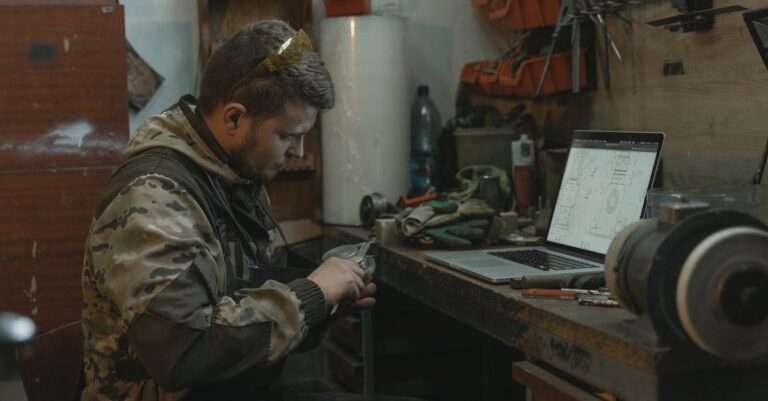Who says gardening has to be a dirty business? With DIY planter boxes, anyone can unleash their inner green thumb while keeping their hands clean and their creativity flowing. These charming containers not only elevate the aesthetics of any space but also give plants the perfect cozy home to thrive. Plus, building your own planter box is like crafting a mini masterpiece—one that you can proudly display to friends and family.
Table of Contents
ToggleOverview of DIY Planter Boxes
DIY planter boxes offer an excellent way to elevate gardening. These customized containers not only beautify spaces but also foster healthy plant growth.
Benefits of DIY Planter Boxes
Creating DIY planter boxes provides numerous advantages. They showcase creativity and allow personalization in any garden or patio. Custom sizes accommodate various plants, ensuring each fits perfectly. These boxes promote better drainage and soil control compared to traditional gardening methods. Additionally, using elevated boxes reduces strain on the back and knees, making gardening more accessible. Aesthetically pleasing designs enhance outdoor areas, making them inviting. Finally, the opportunity for upcycling materials contributes to environmental sustainability.
Common Materials Used
Different materials are suitable for constructing DIY planter boxes. Wood ranks as the most popular choice, known for its natural look and durability. Cedar and redwood resist rot, making them ideal for outdoor use. Alternatively, plastic offers lightweight and weather-resistant options. Metal planters, like galvanized steel, provide a modern touch, while also enduring various elements. Concrete gives a sturdy option, though heavier and less portable. Other materials such as pallets and reclaimed wood allow for creativity while promoting sustainability. Each material brings its own unique aesthetic and benefits to the final product.
Popular DIY Planter Box Designs

A variety of DIY planter box designs exist, accommodating different preferences and gardening styles. Popular options include wooden, metal, and concrete planter boxes, each offering unique benefits and aesthetics.
Wooden Planter Boxes
Wooden planter boxes serve as classic choices for gardening enthusiasts. Cedar and redwood are preferred for their durability and natural resistance to pests. These materials age beautifully, developing a rustic charm over time. Many people enjoy customizing wooden planter boxes through paint or stain, allowing for personalization. Elevated wooden structures easily adjust to various heights, enhancing accessibility for gardeners. Building wooden planter boxes often requires minimal tools, making it an ideal project for beginners.
Metal Planter Boxes
Metal planter boxes provide a modern, sleek look to any garden. Galvanized steel is particularly favored for its strength and resistance to rust. These containers can withstand harsh weather conditions, ensuring longevity. Metal boxes typically come in various shapes and sizes, supporting diverse planting options. Gardeners appreciate the efficient drainage that metal allows, promoting healthy plant growth. Adding a touch of creativity, some choose to upcycle old metal containers for a unique aesthetic.
Concrete Planter Boxes
Concrete planter boxes stand out due to their sturdy construction and industrial appeal. This material offers excellent thermal regulation, protecting roots during temperature fluctuations. Makers can create various sizes and designs with concrete, enhancing versatility. Decorative finishes can transform plain concrete into stylish planters, appealing to a broad audience. These containers are excellent for larger plants, as they provide ample space and support for root systems. Building concrete planter boxes, however, typically requires more advanced skills and equipment.
Step-by-Step Guide to Building Your Own Planter Box
Creating a DIY planter box is straightforward and rewarding. Follow these steps to design a functional and attractive garden feature.
Tools and Materials Required
Gather essential tools and materials before starting the project. Key tools include a saw, drill, measuring tape, and level. A square also helps ensure right angles for accurate construction. Choosing the right materials is crucial. Cedar or redwood serves as the best wood types due to their durability. Opt for screws and weatherproof wood glue for assembly. Additional materials can include landscape fabric for drainage prevention, paint or sealant for finishing touches, and wheels if mobility is desired.
Assembly Instructions
Begin with precise measurements for the planter box dimensions. Cut the wood according to the planned size. Assemble the bottom first, securing it with screws. Next, attach the sides, ensuring all corners form right angles. Pre-drilling holes helps prevent wood splitting. Add drainage holes on the bottom to promote proper water flow. After securing the sides, apply wood glue for extra stability. Finish with paint or a sealant to enhance weather resistance. Once assembled, line the interior with landscape fabric before adding soil and plants.
Tips for Maintaining Your DIY Planter Boxes
Maintaining DIY planter boxes ensures longevity and vibrant plant life. Regular care keeps the containers in top shape, allowing gardens to flourish.
Watering and Fertilizing
Watering requires attention to the specific needs of each plant. Check the soil moisture often; some plants prefer their soil slightly dry, while others thrive in consistently moist conditions. Fertilizing every 4 to 6 weeks during the growing season supports healthy growth. Use a balanced fertilizer or one tailored for specific plants to enhance nutrient intake. Adjust fertilizer application during different growth stages; young plants benefit from higher nitrogen, while flowering plants may need more phosphorus.
Seasonal Considerations
Seasonal changes impact the care required for planter boxes. In spring, prepare the boxes by refreshing the soil and adding compost. Check for any damage from winter weather to ensure structural integrity. During summer, monitor plants for water requirements, as heat increases evaporation rates. Autumn brings the opportunity to prune and prepare for winter, which may include insulating plants in colder climates. Winter care, such as protecting boxes from frost or snow, prevents damage and supports a healthy restart in the spring.
DIY planter boxes offer an excellent way to enhance any gardening space while showcasing creativity. With a variety of materials and designs available, individuals can tailor their planter boxes to fit personal styles and plant needs. This creative project not only beautifies outdoor areas but also makes gardening more accessible and enjoyable.
By following simple construction and maintenance tips, anyone can create functional and attractive planters that thrive throughout the seasons. Embracing this DIY endeavor not only nurtures plants but also contributes to a more sustainable environment. Whether it’s a wooden box for vibrant flowers or a sturdy concrete design for larger plants, the possibilities are endless.



